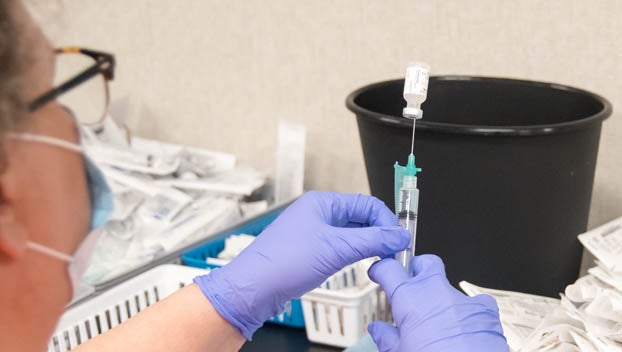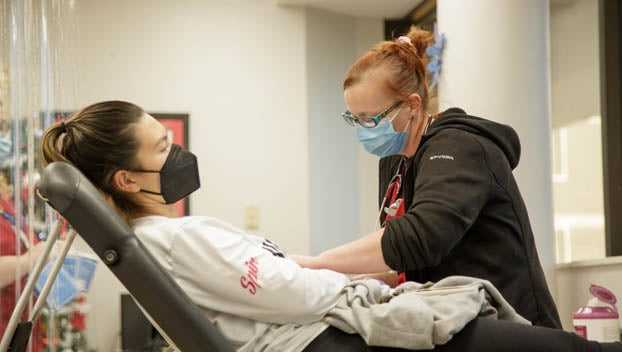A closer look at the Omicron variant
Published 5:48 pm Wednesday, January 5, 2022

- (Vidant Health)
|
Getting your Trinity Audio player ready...
|
With a higher transmission rate than Delta, the Omicron variant of the virus that causes COVID-19 is causing concern around the world, particularly among hospitals and health systems that are juggling testing, vaccinations and contact tracing while also watching their own staffing numbers fluctuate due to the virus.
Officials don’t know the exact percentage of COVID-19 cases in eastern North Carolina that have been caused by Omicron, but they believe Omicron is now the dominant variant.
International studies show that there is a lesser chance of being hospitalized with an Omicron infection than a Delta infection. But Omicron’s rapid rate of spread is a major concern for health officials. The Centers for Disease Control and Prevention said “likely to be more transmissible” than the original virus that causes COVID-19.
Why is that?
“Omicron is much more contagious because it has a lot more mutations,” said Dr. T. Ryan Gallaher, infectious disease specialist with Vidant Health. “Number two, the mutations that it has allow it to bind better to the host cell to get into the cell. … It’s just a tighter fitting process that allows the virus to get into the cell, as compared to other strains like Delta or Alpha or things like that.”
The Omicron variant was first reported to the World Health Organization on Nov. 24, 2021. It was first discovered in specimens collected in Botswana and South Africa. The WHO named the variant Omicron on Nov. 26 and classified it as a Variant of Concern. The first case of Omicron in the United States was identified on Dec. 1, 2021.
There’s still a lot that isn’t known about Omicron. Because symptoms of an Omicron infection can be similar or identical to other variants, the original coronavirus strain, influenza or other ailments, experts say the only way to make a diagnosis is through testing.
“Just because we’re seeing that (Omicron) is, on average, less severe to each patient, you’ve got to remember that that’s only one parameter,” Gallaher said. “That leaves out the population effects, meaning if you have a virus that’s a lot more transmissible, you’re going to get more people infected, and although statistically less of them might get sick, you can overcome that by infecting more people. If you infect more people, which is what we’re seeing with Omicron, Some early data shows that it might be as high as three times more likely or more infectious than even Delta — which is really impressive — shows that yes, while most people might be a mild severity, if you infect more people that’s going to lead to a surge in the system.
“Bottom line is, if we overwhelm our system with people that might survive, what’s that going to do for us as a system of health care if we can’t take care of the other stuff?”




